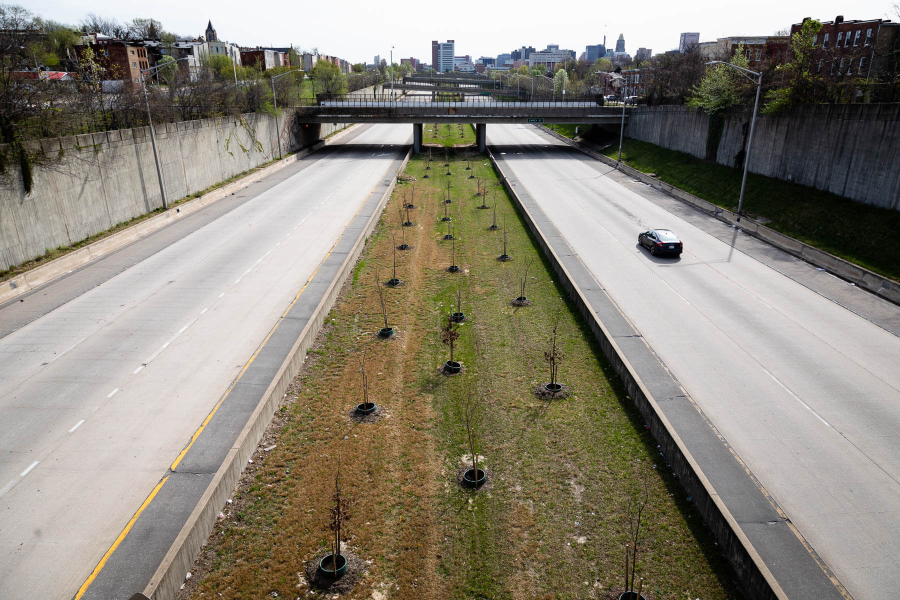Trees are keeping Baltimore cool
While reducing air and water pollution, city trees can also manage the heat island effect

The benefits of forests are well documented. They protect clean water and air, provide habitat for wildlife and support the region’s economy. But forests aren’t the only place where trees improve quality of life.
Increasing tree cover in cities is a sustainable and cost-effective way to improve society and the environment. Adding tree canopy can increase air and water quality, decrease energy costs, improve public health and lead to further community investment.
In 2018, the nonprofit Blue Water Baltimore completed a tree planting project along a stretch of U.S. Route 40 in Baltimore, Md. They planted 477 trees over two years with support from the Baltimore City Department of Transportation. The trees on this seven-acre site will help manage stormwater runoff from surrounding impervious surfaces and also reduce air pollution.
Along with managing and reducing pollution, these trees can offer the city other benefits. Street trees provide shade, reduce air temperature and block winds, helping to lower energy costs and lessen the urban heat island effect.
When paved surfaces like roads absorb sunlight during the day, they increase in temperature. That heat is released at night, and when this happens in a city full of paved surfaces, the temperature of the whole city can be much warmer than surrounding areas. Heat islands increase summertime energy demand, heightening cooling costs while causing air pollution and greenhouse gas emissions to rise.
Through this planting project, Blue Water Baltimore also aimed to impact a place with a complicated history. In the mid-1900s, this neighborhood was targeted for development to extend Interstate 70. What is now a 1.4-mile, six-lane stretch of U.S. Route 40 used to be home to more than 1,000 residents, most of whom were African-American. They were replaced by the “Highway to Nowhere,” which was abandoned in the 1980s due to public opposition.
Blue Water Baltimore hopes that the new trees, planted thanks to the help of more than 150 volunteers, neighbors and students, will create “small yet meaningful improvements within west Baltimore neighborhoods.”
The Chesapeake Bay Program has committed to continually increase urban tree canopy capacity to provide air quality, water quality and habitat benefits throughout the watershed. This includes expanding urban tree canopy by 2,400 acres by 2025.
Learn more about understanding, expanding and maintaining your tree cover at the Chesapeake Tree Canopy Network.

Comments
Thanks for the article! Readers might be interested further in local heat island research maps that show areas that trap heat can run 10 to 20 degrees hotter than in other areas of the same city at the same time without trees and water bodies:
Baltimore snapshot in August 2018 & DC snapshot in October 2018: see
https://www.noaa.gov/news/hot-days-in-city-it-s-all-about-location
Richmond VA snapshot in July 2017: see
https://toolkit.climate.gov/case-studies/where-do-we-need-shade-mapping-urban-heat-islands-richmond-virginia
Thank you!
Your comment has been received. Before it can be published, the comment will be reviewed by our team to ensure it adheres with our rules of engagement.
Back to recent stories